by amy lou marks | Oct 2, 2018 | events |
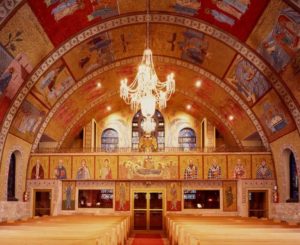
For nearly 50 years, artist Robert J. Andrews has devoted his life to creating mosaic icons in the Byzantine style for churches across the US and UK. We visited one of his beautiful masterworks, the Transfiguration of the Saviour Greek Orthodox Church in Lowell. This church, which is affectionately called the “miniature San Marco’s of Venice”, is bedecked from floor to ceiling with mosaic icons from the hand of Andrews.
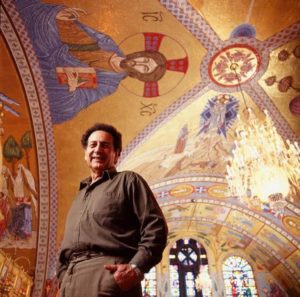
Over 20 NEMS members and guests learned about the mosaic icons by tour guide, Father Tom. The mosaics were paid for and commissioned by church members. The mosaic work at Transfiguration began in 1963 with the Platytera, mounted in the apse behind the altar and continued for 50 years until 2004. The composition of the icons is dictated by the church tradition, but the patrons of the Transfiguration Greek Church requested a predominance of female saints be included in the icons.
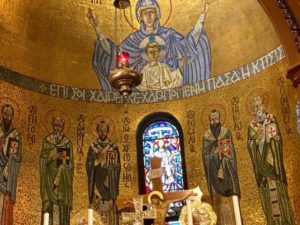
Father Tom described the process of creating a mosaic icon. First, Andrews prepared a “cartoon”, a drawing on paper of the proposed design. These hand-painted drawings were then sent to Citta d’Arte, a school and studio in Tuscany, Italy, where artisans hand-cut glass tesserae based on Andrews’ color drawings. In order to adhere to his artistry, they selected from over 5,000 different colors of glass. The glass tesserae were carefully set in and glued to the reverse side of his line drawings. When completed, the icon was carefully divided into units for shipping. Hauled to the west coast of Italy by truck, they were sent by ship, and sometimes by air, to United States.
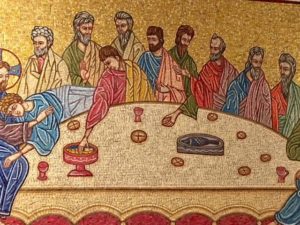 Andrews opened the crates and lay them out on the floor of the church. He inspected the work for any changes or corrections in reverse, since the mosaic laid face down on the paper backing. Only after the process of spreading the mortar on the wall and using special tools to beat and butter the icon into position, did he finally peel off the paper and see the result of his vision.
Andrews opened the crates and lay them out on the floor of the church. He inspected the work for any changes or corrections in reverse, since the mosaic laid face down on the paper backing. Only after the process of spreading the mortar on the wall and using special tools to beat and butter the icon into position, did he finally peel off the paper and see the result of his vision.
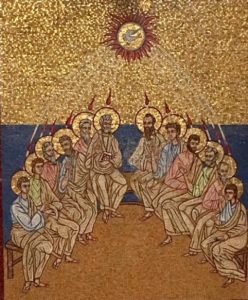
There was an engaged Q&A session and time to explore the mosaics. It was awesome!
Video featuring Robert J. Andrews: https://vimeo.com/1164833
More on Robert J. Andrews: http://www.helleniccomserve.com/robertandrews.html
by amy lou marks | Jun 19, 2018 | events |
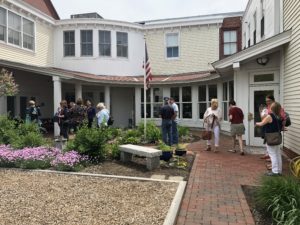
In January NEMS launched its first community project. Over 30 members made mosaic leaves from templates provided by Amanda Edwards. Amanda and crew installed these mosaics on a mural at the Ronald McDonald House in Portland, ME.
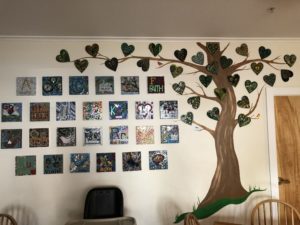
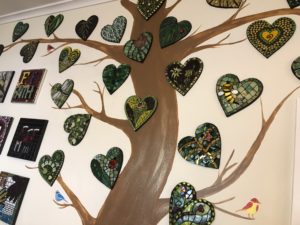


We visited the installation in early June as part of a Portland, ME mosaic tour. The tour started at Amanda’s Studio in Cape Elizabeth, Maine with light refreshments and a meet and greet. From there, participants visited the Ronald McDonald House (RMH) where they went on a special tour of the facilities and viewed the tree mural with heart-shaped leaves created by NEMS members. The mosaics in the mural were awesome, as you can see from the great pictures taken by Su Bailey.
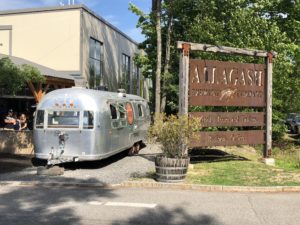
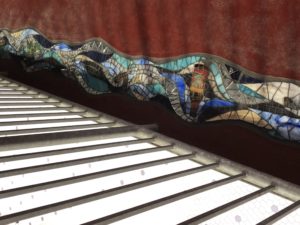
But that’s not all. From RMH, everyone headed to downtown Portland for lunch and a walking tour of Portland’s Old Port and Art’s District lead by Amanda. The program ended at Allagash Beer, where Amanda installed a 92′ floor mosaic along the mezzanine overlooking their bottling facility. Everyone had a great time touring the facility and, of course, tasting the beer.
by amy lou marks | Jun 11, 2018 | events |
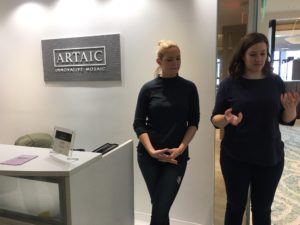

NEMS members recently participated in an exclusive tour of Artaic, a company located in the Seaport’s Design Center. Artaic uses design software and robotic mosaic assembly systems to fabricate large custom architectural mosaics very quickly.

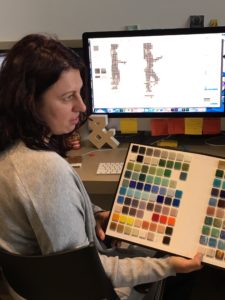
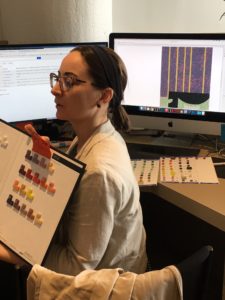
We had a lively discussion with Founder & CEO, Ted Acworth who discussed how the firm came to be and how it sources suppliers. He described several of the projects they’ve fabricated and was interested in feedback on how the software could benefit mosaic artists. Graphic designers showed us how to use the software to visualize and manipulate an original piece of artwork, illustration or photo into a mosaic and how that mosaic will look using different materials and grout colors. Then, we took a tour of the robotic assembly system. Mosaic tile is loaded into sleeves and the software tells the robot where to place each tesserae in a square foot frame.
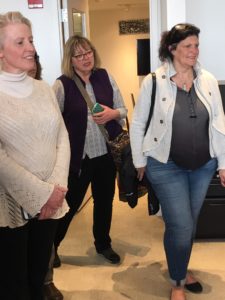
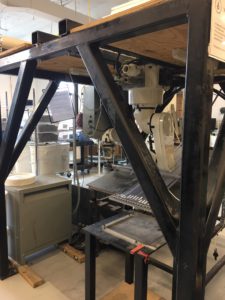
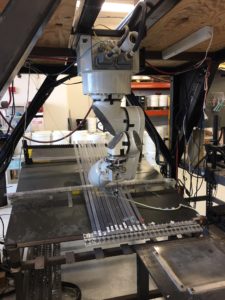
Ted makes the software available to artists for free. You can check it out at www.artaic.com/tylist.
by amy lou marks | Jun 14, 2017 | events |
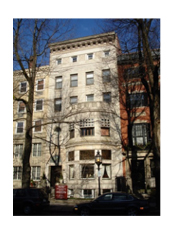 Earlier this year, 30 NEMS members went on a private tour of the mosaics and stained glass at Ayer Mansion, Boston’s Tiffany Treasure. Our tour guide provided us with stories about the family who commissioned the building and put the project in historic context. After the tour, we were treated to a catered reception. A wonderful event. Thanks, Suzanne! If you missed it, you can go on a public tour. See schedule at http://www.ayermansion.org/Visit.html.
Earlier this year, 30 NEMS members went on a private tour of the mosaics and stained glass at Ayer Mansion, Boston’s Tiffany Treasure. Our tour guide provided us with stories about the family who commissioned the building and put the project in historic context. After the tour, we were treated to a catered reception. A wonderful event. Thanks, Suzanne! If you missed it, you can go on a public tour. See schedule at http://www.ayermansion.org/Visit.html.
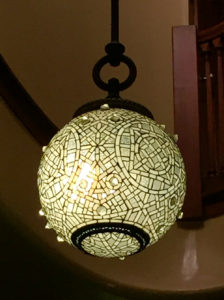
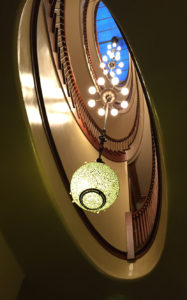 Here’s what we learned. The Ayer Mansion was built between 1899 and 1902 for businessman and art collector Frederick Ayer. It is the only surviving residence created by American artist and designer, Louis Comfort Tiffany.
Here’s what we learned. The Ayer Mansion was built between 1899 and 1902 for businessman and art collector Frederick Ayer. It is the only surviving residence created by American artist and designer, Louis Comfort Tiffany.
At the Mansion, we viewed the Tiffany-designed stone and glass mosaics, graceful metalwork, Favrile glass vases, custom furniture, intricate plaster work, and elaborate art glass windows as well as exterior mosaics.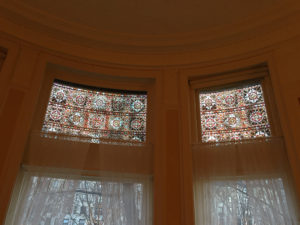
Tiffany was influenced by the art of the East. We saw this in the rich Near Eastern patterns and color combinations in his mosaics and glass.
In the entrance hall of the Ayer Mansion, Tiffany combined mosaics and stained glass to transform an ordinary hall into a sumptuous, luminous stage set, perhaps intended for amateur theatricals and musicals.
The mosaics of the apse-like stair opening are composed of semitransparent glass backed by metallic foil to reflect light, creating an iridescent effect. The three-dimensional effect of the tromp l’oeil pavilion on the stair landing was created through Tiffany’s characteristic use of “plating” or layering clear and opaque glasses to add depth of color and three dimensionality. The adjoining marble engaged columns, raised on a slightly projecting plane, further add to the optical illusion.
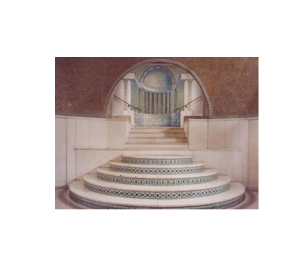
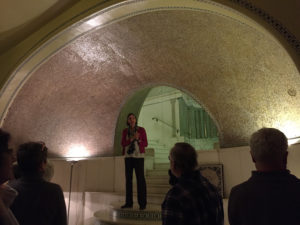
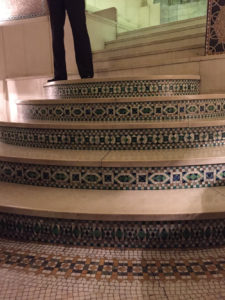
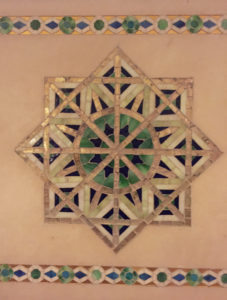
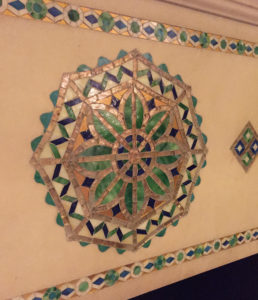



 Andrews opened the crates and lay them out on the floor of the church. He inspected the work for any changes or corrections in reverse, since the mosaic laid face down on the paper backing. Only after the process of spreading the mortar on the wall and using special tools to beat and butter the icon into position, did he finally peel off the paper and see the result of his vision.
Andrews opened the crates and lay them out on the floor of the church. He inspected the work for any changes or corrections in reverse, since the mosaic laid face down on the paper backing. Only after the process of spreading the mortar on the wall and using special tools to beat and butter the icon into position, did he finally peel off the paper and see the result of his vision.
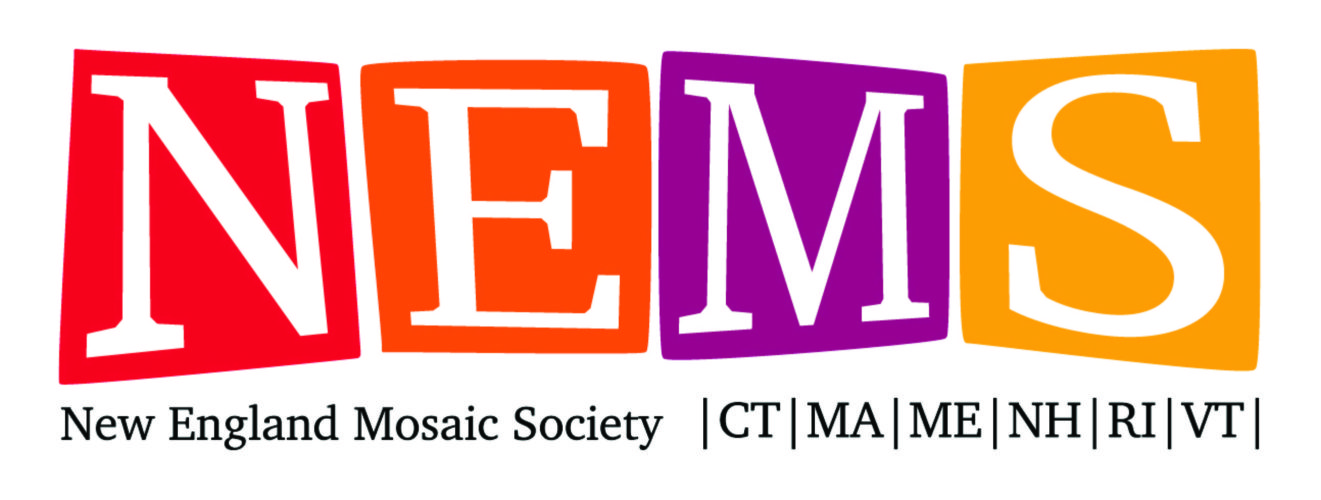













 Earlier this year, 30 NEMS members went on a private tour of the mosaics and stained glass at Ayer Mansion, Boston’s Tiffany Treasure. Our tour guide provided us with stories about the family who commissioned the building and put the project in historic context. After the tour, we were treated to a catered reception. A wonderful event. Thanks, Suzanne! If you missed it, you can go on a public tour. See schedule at http://www.ayermansion.org/Visit.html.
Earlier this year, 30 NEMS members went on a private tour of the mosaics and stained glass at Ayer Mansion, Boston’s Tiffany Treasure. Our tour guide provided us with stories about the family who commissioned the building and put the project in historic context. After the tour, we were treated to a catered reception. A wonderful event. Thanks, Suzanne! If you missed it, you can go on a public tour. See schedule at http://www.ayermansion.org/Visit.html.






